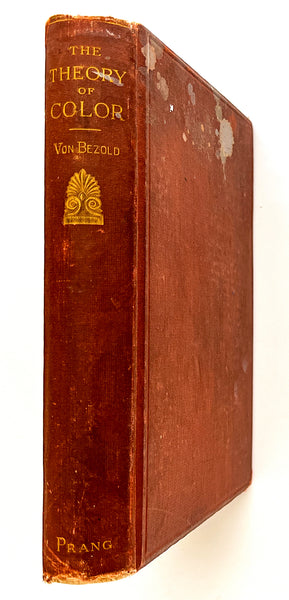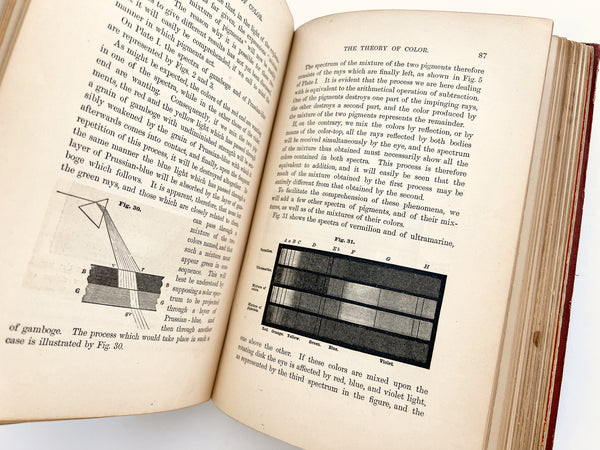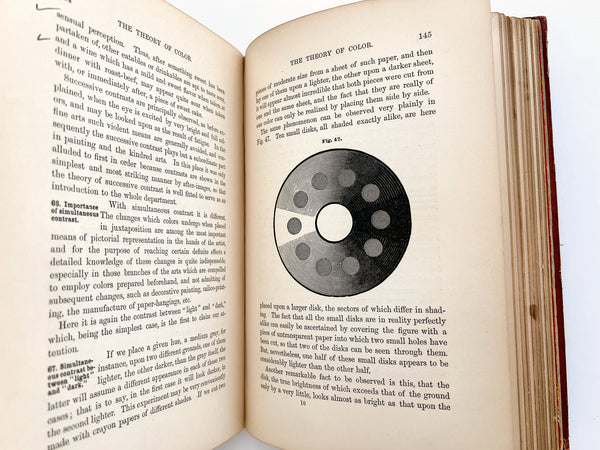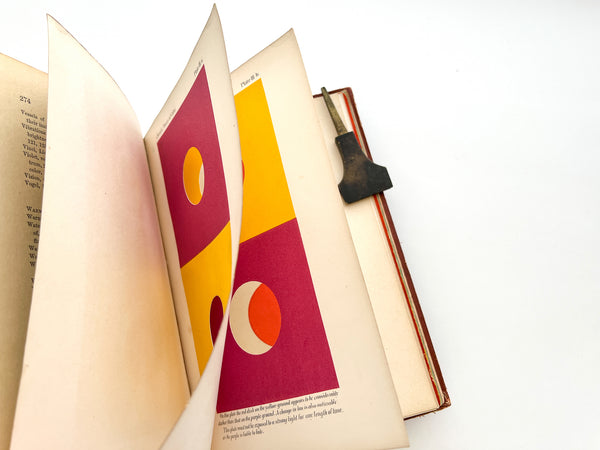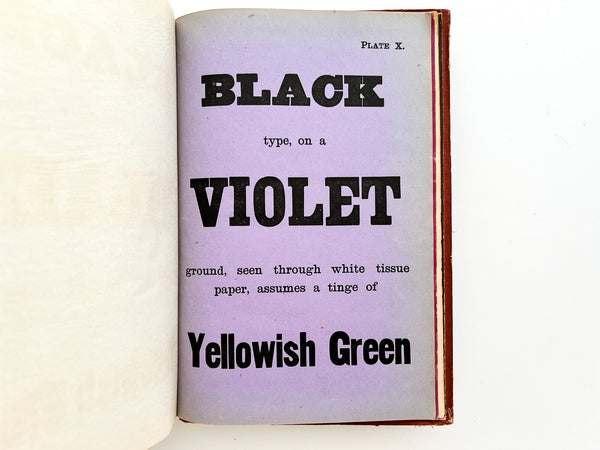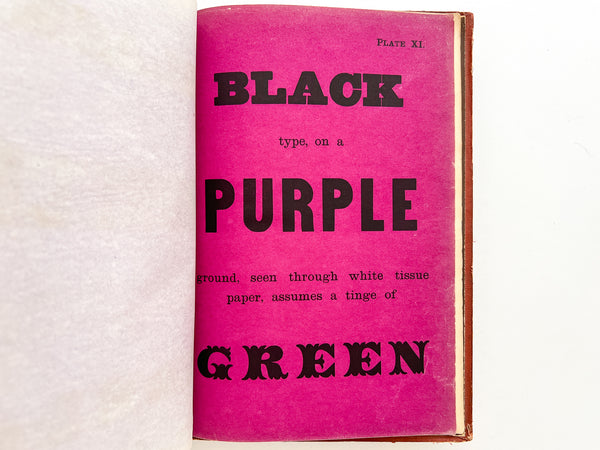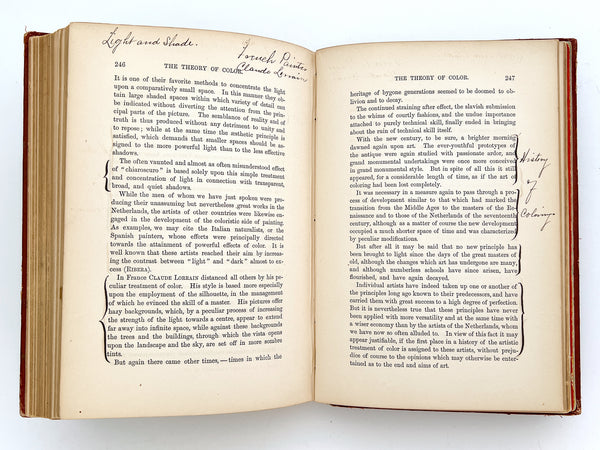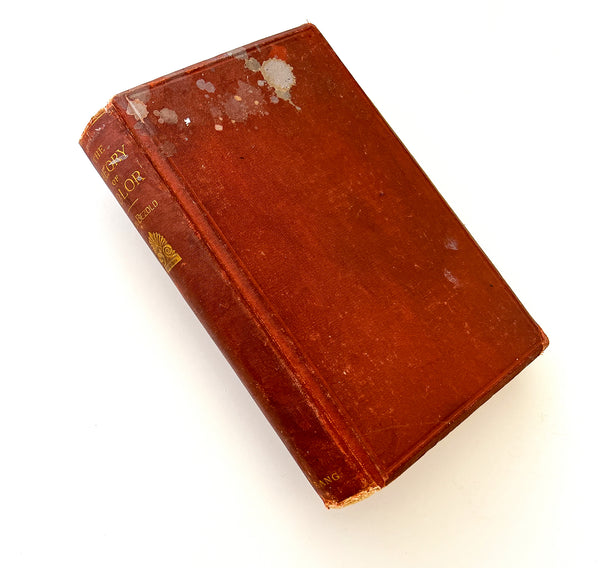The Theory of Color in Its Relation to Art and Art-Industry
...Translated from the German by S.R. Koehler...with an introduction and notes by Edward C. Pickering...Authorized American Edition. Revised and enlarged by the author. Illustrated by chromo-lithographic plates and woodcuts.
First American Edition. Boston: L. Prang and Co., 1876. Publisher's red cloth 8vo, 274pp. Thirteen chromolithograph plates, including frontispiece, and copious woodcut illustrations throughout.
The first American edition of Die Farbenlehre im hinblick auf Kunst und Kunstgewerbe (1874), distinguished by the author in the preface as "not simply a translation, but in reality a new edition... enriched with an additional number of colored plates, which, I believe, will be found to have materially enhanced its value, and which will contribute largely to a clearer understanding of the text… It is intended to connect, by an intellectual chain, the mass of isolated observations which every artist must make, and continues to make daily; to awaken and to intensify the interest in, and the feeling for, color; and to increase and to purify the comprehension of its importance in art." (preface)
The first four chapters are dedicated to the physiological aspects of color, and the fifth is dedicated to the character of color in artistic and art-historical contexts—a subject for which the author acknowledges he has more enthusiasm than expertise. The concluding chapters feature the brilliantly hued color plates printed by Prang, including a 3-part series of plates (2 with cutouts) illustrating the theory of contrast, and 6 plates with bold black text on flat color pages, intended to be interpreted with and without their white tissue guards, exemplify how the perception of a color is altered by its relation to adjacent and additive colors—now known as the "Bezold effect."
A major influence on the canonical works of twentieth century color theory, including Josef Albers' Interaction of Color and Johannes Itten's Elements of Color. Robert Herbert wrote of Bezold and its place in the famed Birren Collection (37) at Yale:
"Bezold represents the generation beyond Maxwell and Helmholtz, when the distinction between color-light and color-pigment was at last clearly understood in the scientific world…. Bezold is typical of the best scientist vulgarizers who incorporated the pragmatic findings of Chevreul with the most recent science, in a conscious effort to reach out toward art and industry… His work, typical of his generation, incorporates sections on the decorative and ornamental arts and on aesthetic principles in painting, frankly non-scientific concerns which reflect the scientist’s expanded perception of their role in society." ( “A Color Bibliography," Yale Library Gazette, July 1974)
This copy has the conspicuous markings of two previous owners: 19th century artist and educator, Lillian H. Picken (1852-1913), who was associated with the Western [Kansas] State Normal School alongside her husband, who was the school’s first principal. The text bears her inquisitive marginalia in brown ink, alongside (sometimes dueling) the green pencil marks of Hubert J. Greenhow, a commercial artist in Ontario who appears to have kept the book as a ready reference, evident from the paint splatters on the cover. Overall Good to Very Good with rubbing wear, general stress to binding and some cosmetic touch-ups. Nevertheless a complete copy with untouched plates in suitably bright condition.
















